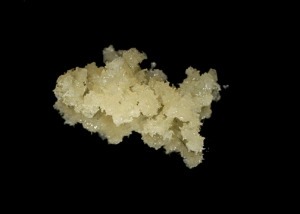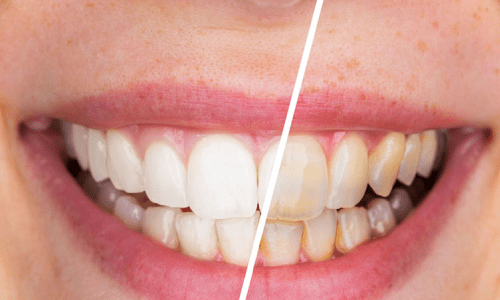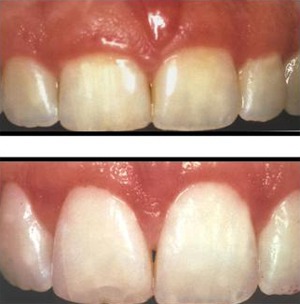TREATMENT OF GUMS
A wide range of gum treatments, like deep cleaning, scaling (deep cleaning of teeth), gingival flap surgery, gingivectomy, and bone grafting, are also included.
What is Scaling?
The procedure through which the dentist uses an ultrasonic scaler to remove the plaque, tartar & food particles from the tooth surface and the surface of restorations is known as Scaling/cleaning of teeth. Tartar, also known as calculus, refers to the yellow, brown, or blackish solid lumps that form between the gums and the teeth.
Excessive deposition of tartar over a longer duration of time leads to the mobility of teeth and unhealthy gums. External stains on the teeth which cannot be removed by simple brushing can be removed by scaling and polishing. Smoking, tobacco, tea & coffee intake etc causes the external stains on the teeth. Sometimes even if a person does not have these habits still the stains are observed, that is because of few chromogenic bacteria present in the saliva which causes these stains.
An ultrasonic machine is used to scale teeth, causing no damage or scratches to the tooth’s natural structure. This treatment is almost painless, so local anesthesia is not necessary.
When can Scaling be done?
- Scaling is a part of oral prophylaxis which needs to be done every six months.
- It is done for patients having bleeding gums, foul smell from the mouth, stickiness in mouth, mobility of teeth.
Myths about Scaling of Teeth
- Teeth become weaker. Mobility of teeth post scaling is a myth as teeth can only get better and healthier after scaling. Presence of tartar holds the unstable teeth intact psychologically, but eventually, it is harming the natural attachment of gums and teeth.
- In some cases, there are gaps between teeth which gets covered by tooth-coloured tartar. After the tartar is removed, the patient mistakenly believes that tooth scaling is to blame for the gap.
- Sensitivity is observed which was not there before the scaling procedure. As the tartar is removed the concealed part of the teeth is comes in contact to the oral environment thereby causing mild to moderate sensitivity to the teeth which is negligible. This sensitivity vanishes in a day or two. Most patients don’t even feel this sensitivity.
What is Flap Surgery?
It is a type of gum procedure known as Gingival flap surgery. The gums are separated from the teeth and folded back provisionally. This lets a dentist to reach the root of the tooth and the bone. During this time, the dentist cleans the deposited tartar and hard set calculus.

When is it Performed?
- To treat gum disease, Gingival flap surgery is performed(periodontitis/pyorroea).
- It may be advised for people with moderate or advanced periodontitis.
- Generally, a treatment that doesn’t involve surgery is done first. This is called scaling and root planing. Gingival flap surgery is indicated if this treatment does not eliminate the gum infection.
- Flap surgery is done to treat gum expansion.
- If required, bone grafting and guided tissue regeneration are done along with flap surgery procedure.

How is it done?
- Local anaesthesia is first given to numb the area.
- Then the periodontist with the use of scalpel, separates the gums from the teeth.
- They will be folded back or lifted in the form of a flap. This gives the periodontist primary access to the roots and bone supporting the teeth.
- Inflamed tissue will be eliminated from between the teeth and from any defects in the bone.
- To clean plaque and tartar, the periodontist will then do a procedure called scaling and root planing.
- Your periodontist may eliminate your bone defects. This procedure is called osseous recontouring. It smoothes the edges of the bone using files or rotating burs.
- After these procedures are performed, the gums will be placed back against the teeth and stitched (sutured) in place.
- Some periodontists use stitches that dissolve on their own. Others use stitches that have to be removed a week to 10 days after the surgery.
- Your periodontist also may cover the surgical site with a bandage known as a periodontal pack or dressing. If the bone is deficient, then the periodontist may also put some bone grafting material there.
Are there any post operative complications?
- There can be mild pain, oozing of blood and /or mild swelling.
- After flap surgery, there can be mild gingival recession.
- Temporary sensitivity to hot and cold can be encountered.
What is Gingivectomy?
The procedure to trim abnormally enlarged gums (gingiva) is known as Gingivectomy. This procedure is normally done by a periodontist (Gum specialist). To achieve a more aesthetic appearance and/or functional contour, Gingivectomy is also done. Gingivectomies are frequently performed using LASERS to cauterize away the unwanted gum tissue without pain and bleeding.
The procedure to trim abnormally enlarged gums (gingiva) is known as Gingivectomy. This procedure is normally done by a periodontist (Gum specialist). To achieve a more aesthetic appearance and/or functional contour, Gingivectomy is also done. Gingivectomies are frequently performed using LASERS to cauterize away the unwanted gum tissue without pain and bleeding.
How it is done?
First of all scaling (superficial cleaning) is performed with an Ultrasonic scaler. In the next sitting, local anaesthesia is administered by the periodontist to the infected gum area. Diseased gum tissue is removed by making a small incision in the gum, and then the remaining tissue is reshaped. Lasers can be used here very effectively. Under laser treatment, one might not require local anaesthesia. At the end of the procedure, a putty-like substance (periodontal pack) is placed over the area to protect the gums during the healing process.
Why it is Necessary? (Advantages)
Gums might sometimes get unwantedly enlarged either due to tartar deposition because of poor oral hygiene or because of the side effects of certain medicines if it is used for a longer time. This leads to swelling in the gums due to increased blood supply (Inflammation) which manifests as bleeding gums. Gums appear red & spongy. These enlarged gum tissue might harbour lot of bacteria in it which ultimately might loosen your teeth. Enlarged gums looks unaesthetic (ugly), making your smile unpleasant.
- Gingivectomy cures bleeding gums.
- It brings back the enlarged gums to normal size.
- It improves your smile line.
What are its complications? (Disadvantages)
- May cause mild postoperative pain.
- If not properly maintained the chances of reoccurrence remains.
What is Bone Grafting?
Bone grafting is a medical procedure wherein a part of the missing bone is replaced by another bone or material known as bone graft. Through this surgical procedure, the graft replaces the missing portion of the bone and also helps in the regrowth of the bone. The existing bone and the grafts fuse, after a period of a few months.
Where can it be used?
Bone grafts are usually used when the bone is missing which can happen mainly due to periodontal disease (pocket formation), accident, trauma, tumour removal or it can be congenital in nature. Bone grafts are also used with dental implants.

Types of Grafting Materials
Various types of Grafting Materials are available.
Autografts:
Graft that is taken from the person’s own body.
Allograft:
Graft that is taken from a donor, usually deceased, and is procured from a bone bank. These grafts are commercially available.
Most expected and successful therapeutic outcomes are achieved with the use of it.
Synthetic grafts:
Grafts are made from synthetic raw materials like calcium phosphates or calcium sulphate.
Xenografts:
Grafts procured from another species like bovine bones.
Autografts:
Graft that is taken from the person’s own body.

Allograft:
Graft that is taken from a donor, usually deceased, and is procured from a bone bank. These grafts are commercially available.
Most expected and successful therapeutic outcomes are achieved with the use of it.







